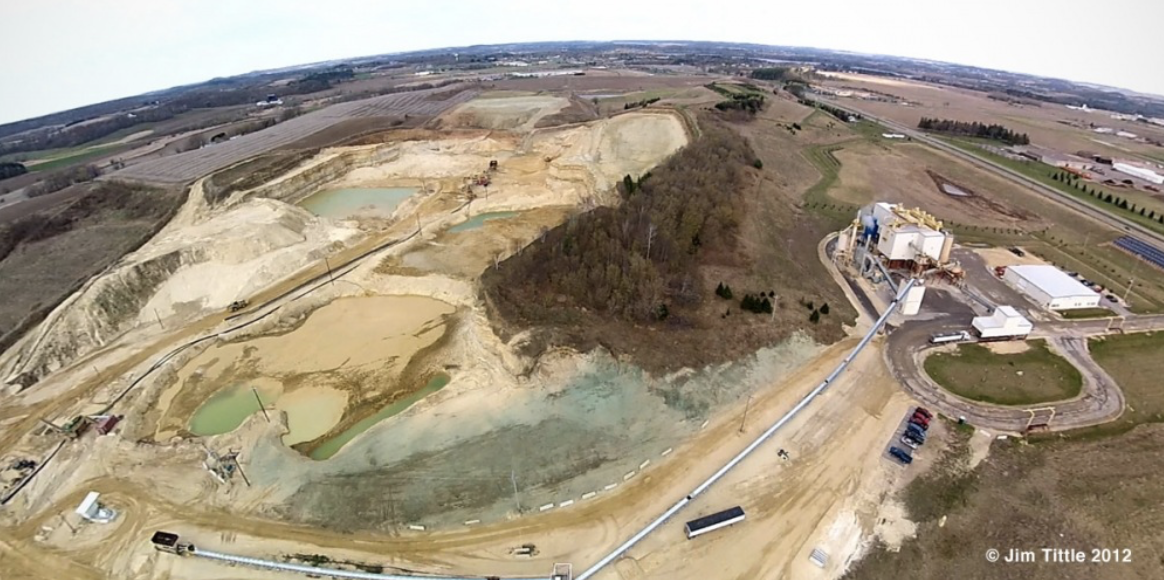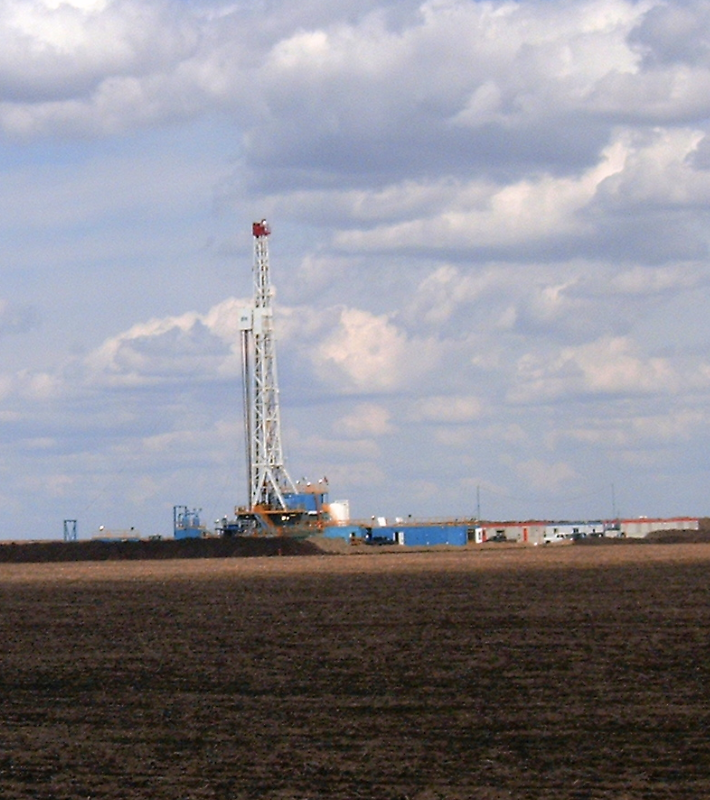 Hydraulic fracturing, or “fracking,” is the controversial practice of extracting fossil fuels from hard-to-reach shale deposits. In this process, fossil fuel corporations force these underground shale rock formations to crack and split open by blasting them with a mixture of highly pressurized water, high quality sands, and toxic substances, unleashing massive quantities of natural gas and oil. The sand helps to prop these fissures open so the fossil fuels can be released and captured. As a result, waste material often seeps into groundwater, or is collected and then injected back into the ground using waste disposal wells. While not a new development, the amount of fracking has dramatically accelerated in recent years.
Hydraulic fracturing, or “fracking,” is the controversial practice of extracting fossil fuels from hard-to-reach shale deposits. In this process, fossil fuel corporations force these underground shale rock formations to crack and split open by blasting them with a mixture of highly pressurized water, high quality sands, and toxic substances, unleashing massive quantities of natural gas and oil. The sand helps to prop these fissures open so the fossil fuels can be released and captured. As a result, waste material often seeps into groundwater, or is collected and then injected back into the ground using waste disposal wells. While not a new development, the amount of fracking has dramatically accelerated in recent years.
This process pollutes our air and water and can even lead to induced earthquakes and flammable tap water (check out this video of a woman taking a match to her kitchen faucet). It also unleashes methane, a greenhouse gas that is 30 times as potent as carbon dioxide, into the atmosphere — contributing to climate change and reinforcing our dependence on fossil fuels, delaying the urgently necessary transition to renewable energy sources. Luckily, Wisconsin doesn’t have any known natural gas deposits, so we have been spared from the immediate harms of fracking. But our state does have an indirect — yet important — connection to this destructive industry…
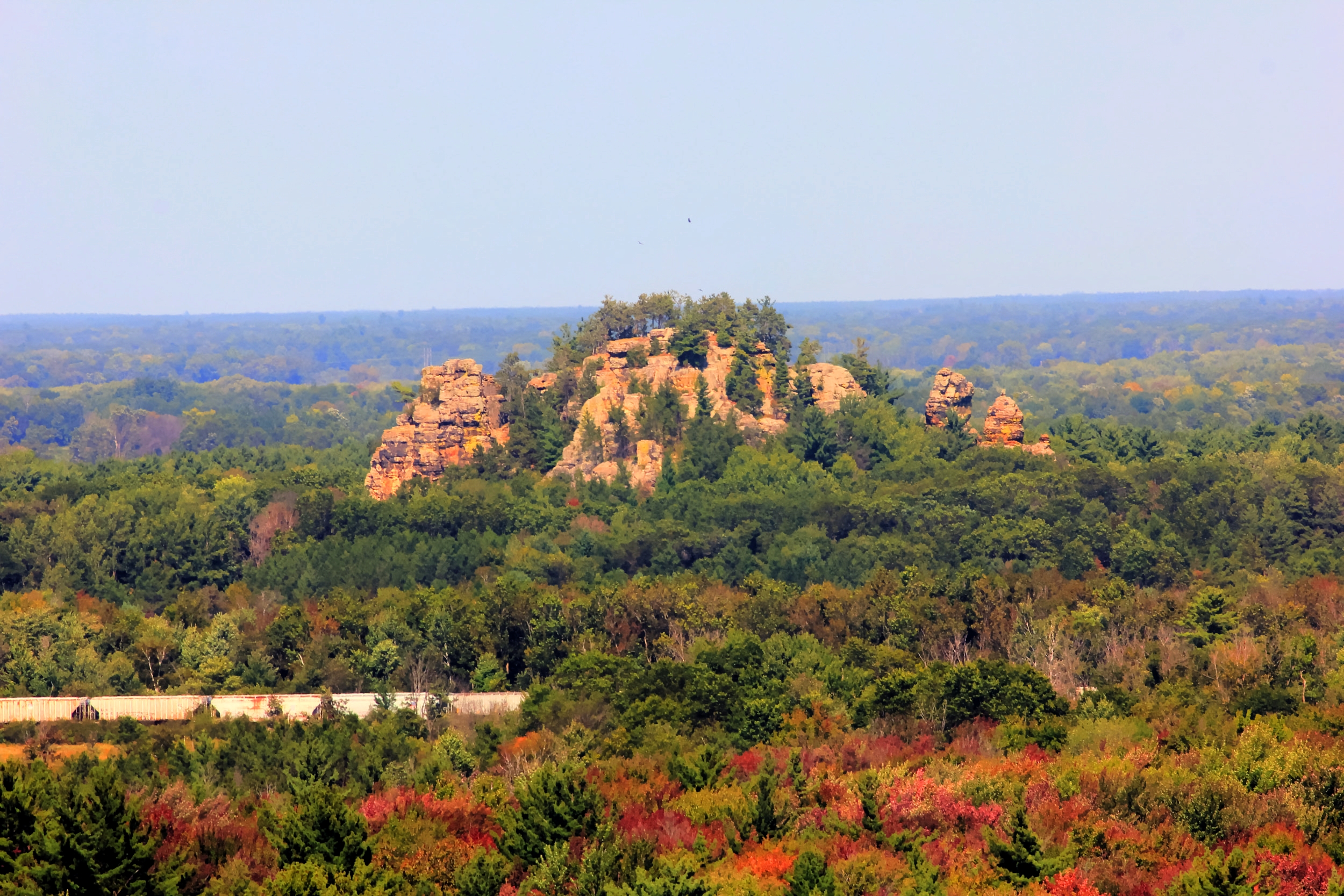
What is frac sand mining?
Western Wisconsin has beautiful rolling hills and scenic bluffs that stretch from the banks of the Mississippi River into the central part of our state. Beyond their aesthetic appeal and intrinsic value, they facilitate hiking and other recreational activities as well as provide habitats for many species of native flora and fauna. But for the fracking industry, these bluffs are important for just one thing — high quality sand.
Fracking requires a steady supply of special silica sand with grains of ideal size, shape, strength, and purity — called frac sand. And fracking necessitates enormous quantities of it; in fact, each natural gas or oil well uses millions of pounds of this sand in its lifetime. Because so much sand is needed, frac sand mining — the process of extracting the sand from the earth — has developed to satisfy the surging demand.
In a lot of places, this sand is rare. Unfortunately for us, the majestic bluffs that have enhanced the beauty of our state’s western landscape for millennia contain the ideal type of sand needed for fracking. And the fossil fuel industry and mining corporations have figured it out.
The Sand Rush
 The boom in natural gas and fracking has triggered a subsequent “sand rush” in western Wisconsin, causing mining corporations to scramble to supply natural gas wells with a necessary ingredient. Wisconsin now has 128 industrial sand facilities, including mines, processing plants, and rail load-outs.
The boom in natural gas and fracking has triggered a subsequent “sand rush” in western Wisconsin, causing mining corporations to scramble to supply natural gas wells with a necessary ingredient. Wisconsin now has 128 industrial sand facilities, including mines, processing plants, and rail load-outs.
To extract this sand, mining companies use open pit and hilltop removal mining, which destroys landscapes, poisons our environment, and harms quality of life. Enormous tracts of land are cleared of all greenery, and then the “overburden” — which is what miners call all of the soil and life that exists above whatever mineral they are extracting — is excavated using heavy machinery and explosives. And as the name suggests, hilltop removal mining involves literally destroying entire hills and bluffs.
Because the sand is actually in rock form, it must be pulverized and then washed, to remove any impurities. The waste materials are then collected in vast pools of sludge, while the purified frac sand is stored in large piles awaiting transportation to natural gas and oil wells.
Why is frac sand mining bad for Wisconsin?
1) It’s environmentally destructive. Frac sand mining requires clearing land of forests, grasslands, meadows, and wetlands, eliminating valuable ecosystems and habitats. But it also generates alarming levels of air and water pollution. The mining process, especially the excavation and pulverization steps, release silica dust — a known carcinogen that causes lung cancer — into the air. Long term low level exposure can also cause silicosis, which is debilitating, incurable, and often fatal, as well as other respiratory diseases, meaning miners and people living near the mines are at risk. In one study, 79 percent of air samples at frac sand sites revealed levels of silica dust over the exposure limit, and a third were so high that most respirators wouldn’t be capable of removing it 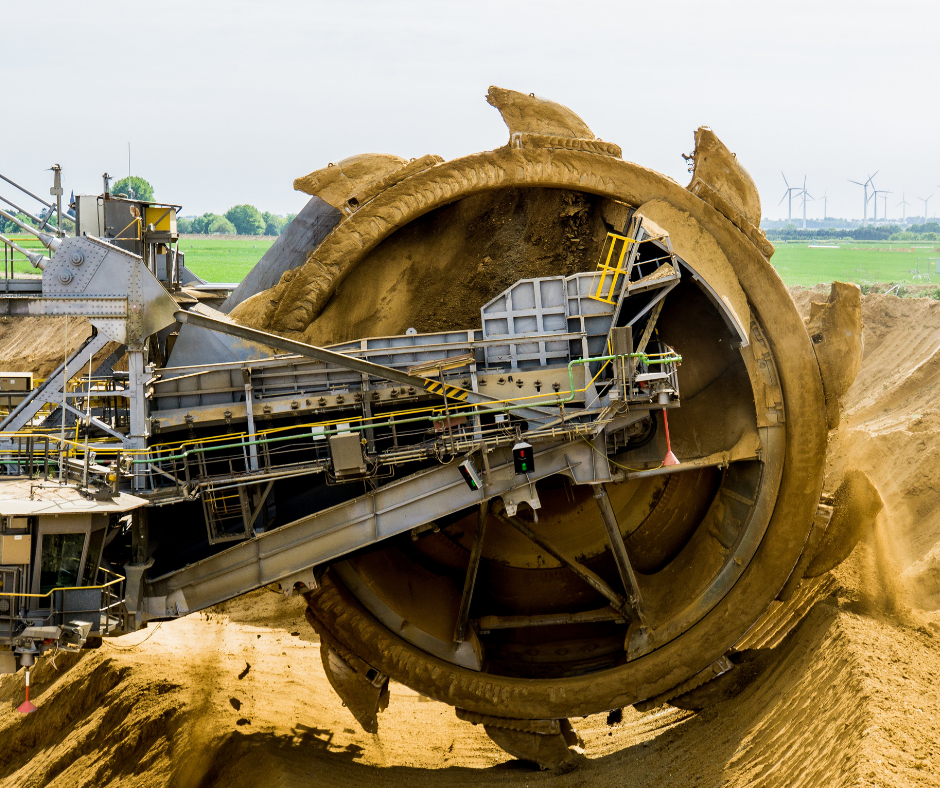 from the air. But it’s not just the air — water is affected too. These mines contaminate local waterways with toxic substances like heavy metals and polyacrylamide, and there have been several cases of waste liquid spills, including one that released 10 million gallons of waste into tributaries of the Trempealeau River — leading to dangerous levels of heavy metals in the water. Additionally, frac sand mining requires immense quantities of water, contributing to water overuse and waste. In fact, just one mine can demand up to 2 million gallons of water a day. Finally, these mines increase noise and light pollution; some residents in Trempealeau County said they can’t even open their windows due to “constant noise and light.”
from the air. But it’s not just the air — water is affected too. These mines contaminate local waterways with toxic substances like heavy metals and polyacrylamide, and there have been several cases of waste liquid spills, including one that released 10 million gallons of waste into tributaries of the Trempealeau River — leading to dangerous levels of heavy metals in the water. Additionally, frac sand mining requires immense quantities of water, contributing to water overuse and waste. In fact, just one mine can demand up to 2 million gallons of water a day. Finally, these mines increase noise and light pollution; some residents in Trempealeau County said they can’t even open their windows due to “constant noise and light.”
2) It enables fracking. As previously discussed, fracking for natural gas and oil is incredibly detrimental to the environment and generates a litany of social ills — from poisoning our air and water with harmful pollutants and carcinogens to exacerbating climate change to even inducing earthquakes. Basically, there is no safe amount of fracking, and the practice needs to come to an immediate halt if we want to protect both local communities and the planet as a whole. Because frac sand mining provides the necessary ingredients that fuel this destructive process, these frac sands mines act as accomplices to the fossil fuel industry and help perpetuate this unjust and degrading system.
3) It leads to volatile boom-and-bust cycles that spell disaster for local economies. At first, frac sand mines might appear to be beneficial to the economy, as they hire workers and generate economic activity. But this activity is unsustainable and often disconnected with the rest of the local economy, meaning much of the money generated through the mining process does little to benefit Wisconsin’s communities and makes the economy less diversified and more vulnerable to the wild fluctuations of the sand market. And the uncertain and unstable jobs that are actually provided make up just a small fraction of the total employment in the region and can actually displace more sustainable and socially beneficial jobs. Plus, technological improvements mean less and 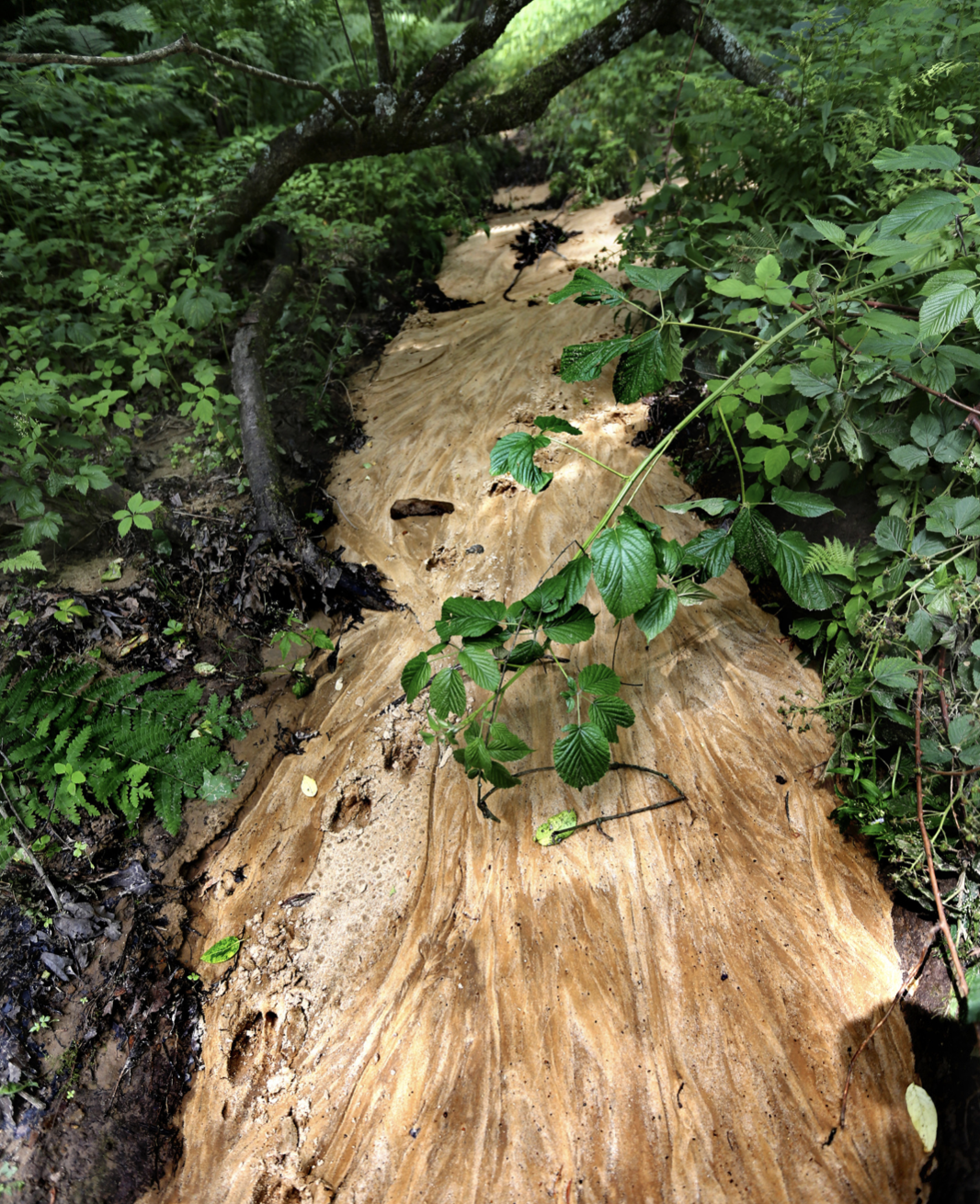 less workers are hired as the years go on, and more profits are hoarded by the executives and corporations that own the mines. And the boom years are often short-lived; already, Wisconsin frac sand mines are going idle or bankrupt and laying off workers as the market becomes oversaturated with too much sand. More profitable mines selling cheaper sand closer to oil and gas wells are also opening up in Texas and New Mexico, outcompeting these Wisconsin mines and causing their market share to plummet. Regardless of the competition, frac sands mining, because it relies on depleting the earth’s finite resources, is inevitably unsustainable and inescapably a short-term endeavor. And this isn’t the first downturn for the nascent industry — 2016 also saw mine closures and layoffs. What this means is that frac sand jobs are notoriously insecure and precarious: once the mine folds, the jobs disappear and all that remains is the environmental devastation, the harmful health consequences, the higher carbon emissions, and the deep scars on Wisconsin’s landscape.
less workers are hired as the years go on, and more profits are hoarded by the executives and corporations that own the mines. And the boom years are often short-lived; already, Wisconsin frac sand mines are going idle or bankrupt and laying off workers as the market becomes oversaturated with too much sand. More profitable mines selling cheaper sand closer to oil and gas wells are also opening up in Texas and New Mexico, outcompeting these Wisconsin mines and causing their market share to plummet. Regardless of the competition, frac sands mining, because it relies on depleting the earth’s finite resources, is inevitably unsustainable and inescapably a short-term endeavor. And this isn’t the first downturn for the nascent industry — 2016 also saw mine closures and layoffs. What this means is that frac sand jobs are notoriously insecure and precarious: once the mine folds, the jobs disappear and all that remains is the environmental devastation, the harmful health consequences, the higher carbon emissions, and the deep scars on Wisconsin’s landscape.
What can we do to stop frac sand mining?
Local activists are turning people out to public hearings, questioning the mining companies and educating people in the area about the dangers that exist, and they’ve had some success in preventing some of the harms that these mines inflict on the state. Unfortunately, however, once one mine is stopped, the companies just pop up with a new mine in the next town over, evading laws and exploiting new localities inexperienced at dealing with these manipulative mining corporations.
The one action that has had some success in blocking new frac sand mines are moratoriums. Towns, cities, and counties have established short-term moratoriums in order to better study the impacts of mining proposals. As expected, though, sand mine companies have actively fought against these moratoriums. For example, High Country Sand sued Eau Claire County after the county established a moratorium on the company’s proposed mine. Worse, in the last days of the legislative session, the legislature passed 2011 Wisconsin Act 144. The law makes it far more difficult for cities, towns, and villages to establish development moratorium ordinances, effectively blocking local communities from creating moratoriums.
Therefore, we need to enact a statewide moratorium on new frac sand mines in Wisconsin, at least until the state conducts a comprehensive study of the impacts, and we need stronger regulations to protect public health, local communities, and sensitive habitats from the degradation that results from the rapid proliferation of these inherently unsustainable mines.
The mining companies claim they are bringing jobs into the area, and we do need jobs. But these are insecure and short-term jobs that only employ a small fraction of the population. There are better ways to create real, sustainable jobs.
If you’d like to help us in our fight against these frac sand mining companies and protect Wisconsin, please volunteer with us!
